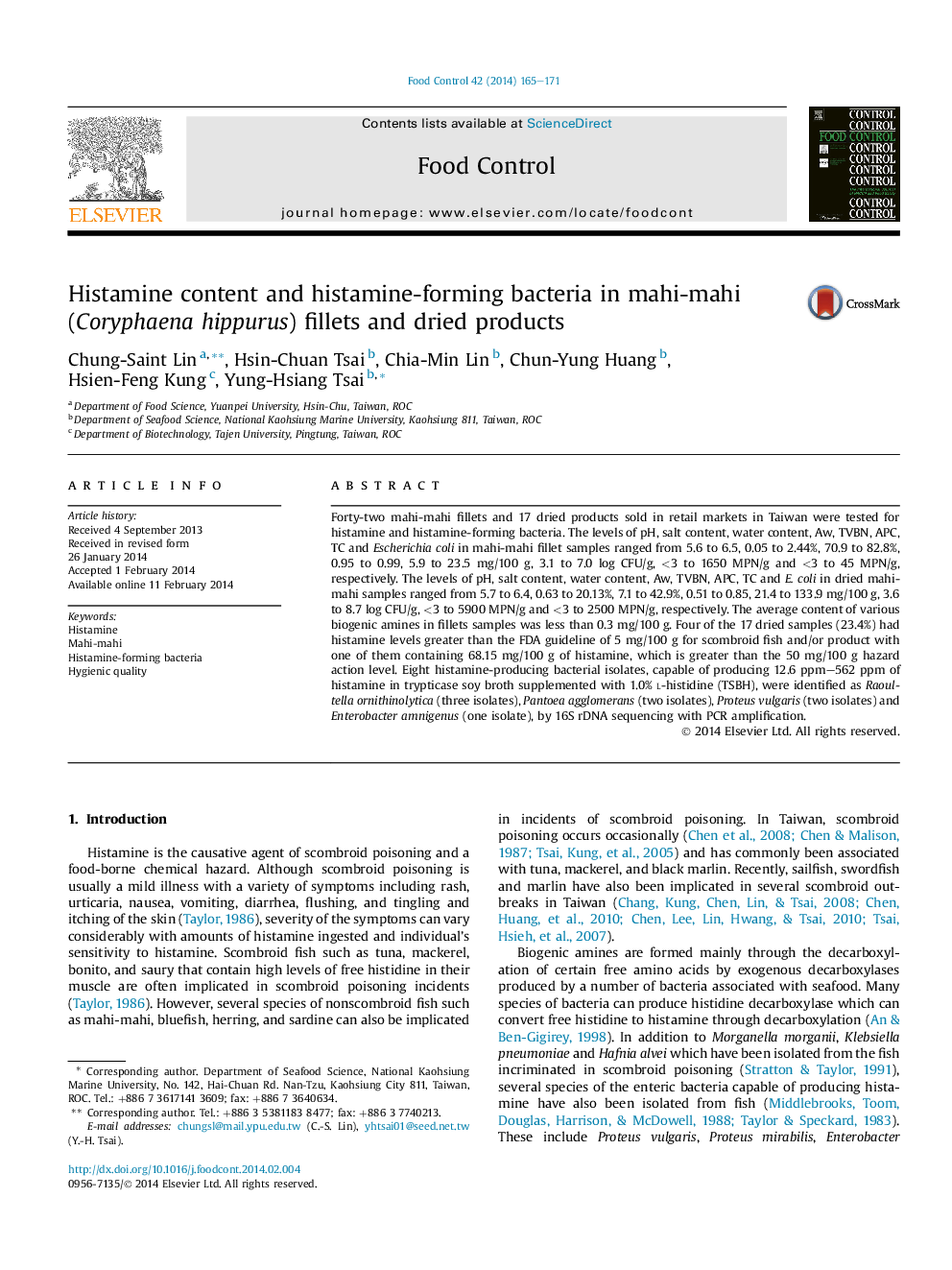| Article ID | Journal | Published Year | Pages | File Type |
|---|---|---|---|---|
| 6391673 | Food Control | 2014 | 7 Pages |
Abstract
Forty-two mahi-mahi fillets and 17 dried products sold in retail markets in Taiwan were tested for histamine and histamine-forming bacteria. The levels of pH, salt content, water content, Aw, TVBN, APC, TC and Escherichia coli in mahi-mahi fillet samples ranged from 5.6 to 6.5, 0.05 to 2.44%, 70.9 to 82.8%, 0.95 to 0.99, 5.9 to 23.5 mg/100 g, 3.1 to 7.0 log CFU/g, <3 to 1650 MPN/g and <3 to 45 MPN/g, respectively. The levels of pH, salt content, water content, Aw, TVBN, APC, TC and E. coli in dried mahi-mahi samples ranged from 5.7 to 6.4, 0.63 to 20.13%, 7.1 to 42.9%, 0.51 to 0.85, 21.4 to 133.9 mg/100 g, 3.6 to 8.7 log CFU/g, <3 to 5900 MPN/g and <3 to 2500 MPN/g, respectively. The average content of various biogenic amines in fillets samples was less than 0.3 mg/100 g. Four of the 17 dried samples (23.4%) had histamine levels greater than the FDA guideline of 5 mg/100 g for scombroid fish and/or product with one of them containing 68.15 mg/100 g of histamine, which is greater than the 50 mg/100 g hazard action level. Eight histamine-producing bacterial isolates, capable of producing 12.6 ppm-562 ppm of histamine in trypticase soy broth supplemented with 1.0% l-histidine (TSBH), were identified as Raoultella ornithinolytica (three isolates), Pantoea agglomerans (two isolates), Proteus vulgaris (two isolates) and Enterobacter amnigenus (one isolate), by 16S rDNA sequencing with PCR amplification.
Related Topics
Life Sciences
Agricultural and Biological Sciences
Food Science
Authors
Chung-Saint Lin, Hsin-Chuan Tsai, Chia-Min Lin, Chun-Yung Huang, Hsien-Feng Kung, Yung-Hsiang Tsai,
